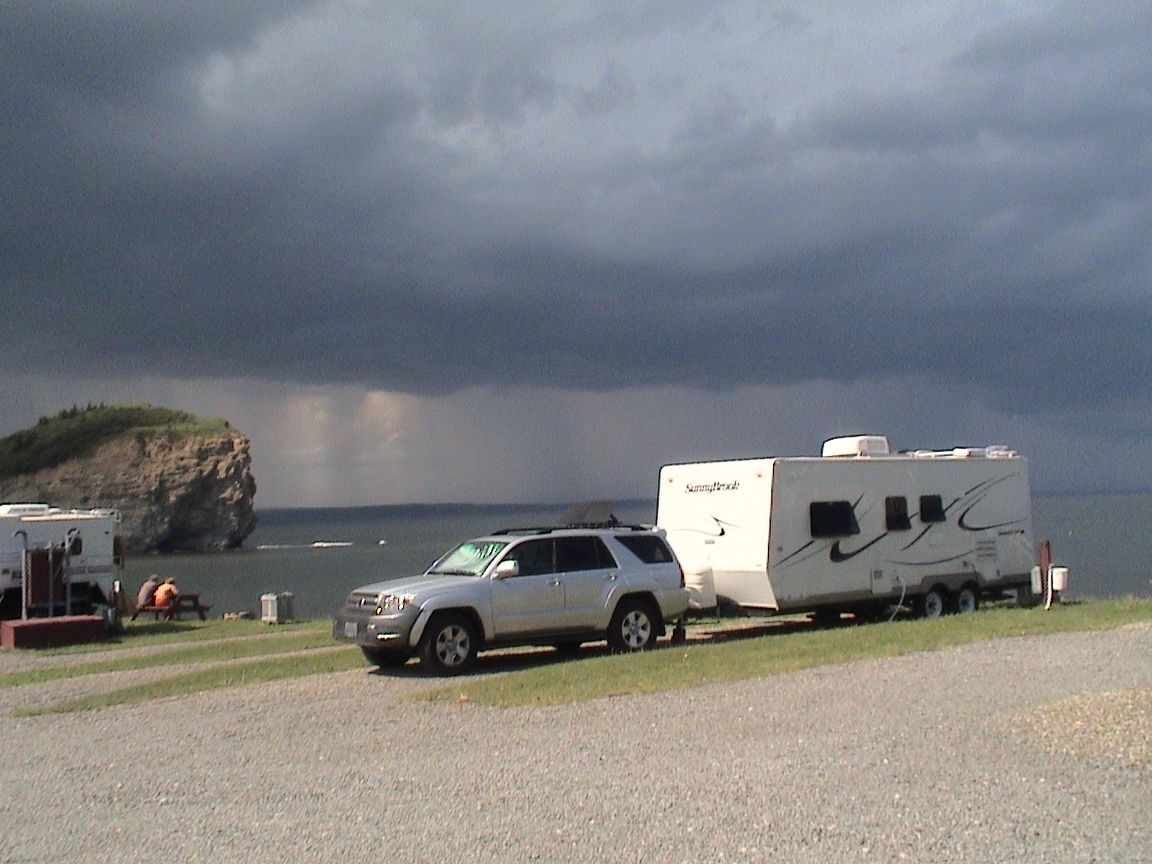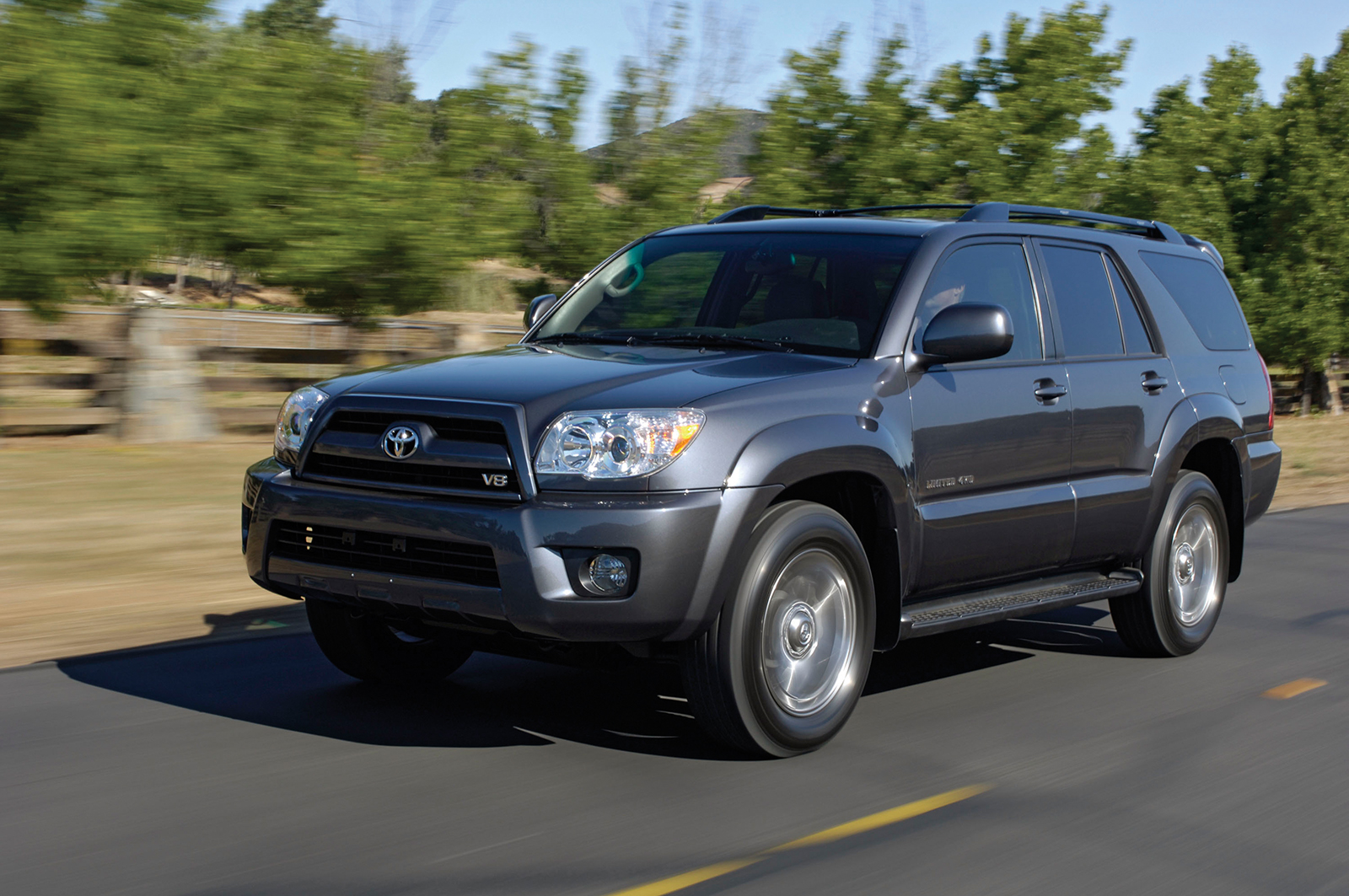A reader’s question brings a very interesting answer…
Through the course of my research for the Hitch Hints column, I often come across a letter from a reader that opens the door to a whole new realm of RV towing topics.
That is what happened a few days ago, when a reader contacted me regarding the towing characteristics of his Toyota 4Runner.
Here is the core of that discussion – I think you might find it quite enlightening.
Hi Andy:
We have a Toyota 4Runner SUV with a 7000 lb. towing package. Like a lot of people we started looking at small trailers but now are looking at a 31’ trailer that weighs 5460 lbs. If we add 1000 lbs. of stuff we will be 6460 lbs, so well under our tow rating. However, some people say you should not tow more than 80% of the tow rating which is only 5600 lbs. Do you think we can tow this weight of a trailer or should we look at a lighter one?
The mysterious 80% rule as it is sometimes called is one of those myths that appear to have grown out of nowhere. Some fantastic working tow vehicles quite nicely tow some trailers that are well above their listed tow ratings, whereas others do not tow trailers very well that are only 50% of their rating.
The problem with the 80% rule is that it is based on a tow rating – but tow ratings are not a great way to assess a combination. The first problem is they are based on weight alone – but there are many other factors that are very important which tend to be ignored. Where we find weight matters the most is low speed acceleration or when climbing a steep hill, the rest of the time you are towing it is fairly insignificant.
Your 4Runner has a great drive train – the engine produces 260 Horsepower and 306 lbs. of torque which is multiplied by your 3.52:1 first gear ratio and 3.73:1 final drive ratio – it can exert a massive 4017 pounds of torque on the axle shafts. If we divide this by the tire radius we will have 3050 pounds of thrust generated to move the weight of the combination. We find that each pound of thrust will easily move 5 pounds of combination weight. So the 4Runner drive train can easily move a 15,000 pound combination or a 10,000 lb. trailer – so from a pure power to “move weight” standpoint it is very capable.
The second step is to assess if there is enough horsepower to tow the trailer through the air in a moderate headwind at highway speed. When the 4Runner tows in 4th gear at 100 KPH, it is turning 2400 RPM. I don’t have a power curve for this engine, but I would guess that it is generating about 165 hp at this RPM. The most aerodynamic trailers require around 70 hp at 100 KPH and the worst need about 120 hp, so there is plenty of power to tow any trailer you chose through the air.

Like many small and midsize SUV’s, the 4Runner is a great off road vehicle. Many of the design features that make them great off road are not an asset for great handling while towing. The wheelbase is 110” but the rear overhang is 44% of the wheelbase, tires are 265/65R x 17” on 7” wide rims – this means the rim can sway about 4” side to side inside the tire. (265/60R x 18 tires on 7.5” rims are used on the newer 4Runners). The live rear axle articulates very well off road but it is not nearly as good as independent rear suspension for towing stability.
What all this means is that the 4Runner from a power perspective will tow whatever you choose with relative ease but it is limited in its ability to control larger trailers. As a trailer gets longer or taller, the sidewall area becomes larger so crosswinds and passing trucks can have a substantial effect. One other issue with the 4Runner is that the hitch receiver tube is very short and is not able to withstand a lot of hitch weight, the problem is the huge spare tire where a hitch should go. We change the tire to a much smaller 235/50R x 17” This makes it a temporary spare but it allows enough space to lengthen and reinforce the hitch.
You have three options. One would be to trade the 4Runner for the Sequoia, which has independent rear suspension, 122” Wheelbase and a track that is 7” wider. The tires still are not ideal, but they could easily be changed to a more optimal size.
The second option would be to change the tires to 235/65R x 17” XL (extra load) tires which will handle much more precisely. Then look at 25’ trailers with a low profile and independent suspension.
The third option is what we often do for owners of SUV’s – we install a Hensley hitch system. The Hensley eliminates virtually all sway. The Hensley is expensive at about $3500, but that is still much less expensive than trading vehicles or purchasing the wrong trailer only to trade it in later.
Even with the Hensley hitch, I would suggest staying with a low profile trailer where the slide is raised over the wheel wells. Though it is not absolutely necessary with the Hensley, I would look at installing 235/65R tires for optimal handling and a little better fuel economy.
Enjoy your new Trailer!
Andy






















